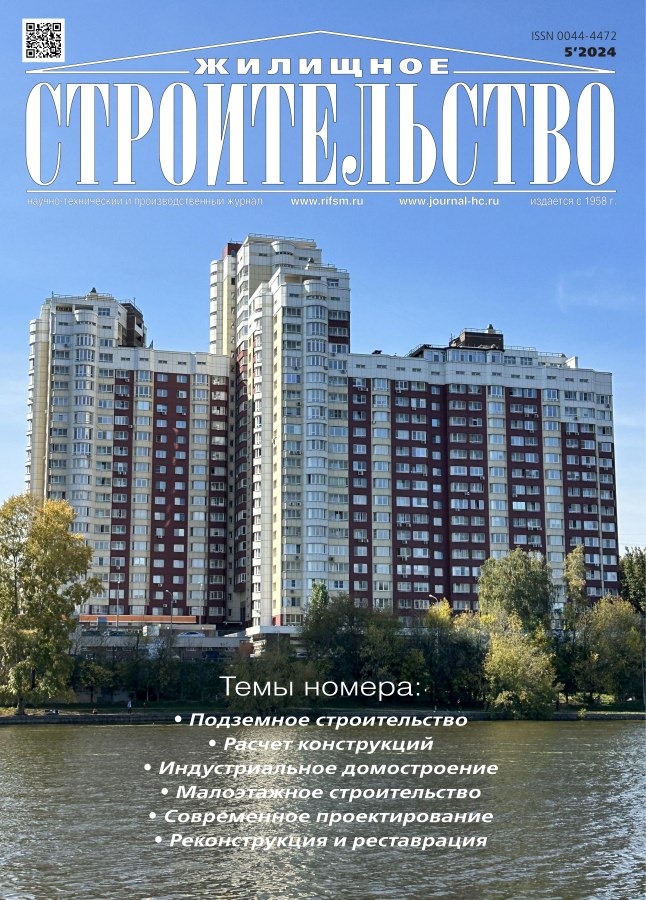Comparison of Software Packages for BIM Modeling During the Restoration of a Cultural Heritage Site
- Autores: Makhov I.O.1, Sergiyenko D.A.2, Chizhevskaya A.D.2
-
Afiliações:
- Research Institute of Design
- National Research Moscow State University of Civil Engineering
- Edição: Nº 5 (2024)
- Páginas: 47-50
- Seção: Articles
- URL: https://gynecology.orscience.ru/0044-4472/article/view/634789
- DOI: https://doi.org/10.31659/0044-4472-2024-5-47-50
- ID: 634789
Citar
Texto integral
Resumo
Creating a virtual building model in BIM allows you to set not only the geometric parameters of the elements, but also the characteristics of the materials. At the same time, the application of BIM in historical buildings can be difficult due to the complexity and variety of geometric shapes and materials. In this regard, an important criterion for choosing software is the simplicity of setting the basic parameters necessary to solve specific tasks. The creation of a digital model of a historical building significantly expands the capabilities of the designer and allows you to find non-standard ways to solve the tasks set, at the same time to be confident in the reality of the implementation of design solutions. At the same time, standard BIM tools are focused on modern buildings and may not take into account the complexity of the geometry of a historical building. The need to create historical structures, such as wooden floor slabs or vaulted elements, may be associated with significant difficulties when creating in a BIM environment in various software packages.
Palavras-chave
Texto integral
Sobre autores
I. Makhov
Research Institute of Design
Autor responsável pela correspondência
Email: MahovIO@ya.ru
Deputy Director RID
Rússia, build.2, 26, Yaroslavskoe Highway, Moscow, 129337D. Sergiyenko
National Research Moscow State University of Civil Engineering
Email: SergienkoDA@mgsu.ru
Lecturer, Department of Engineering Graphics and Computer Modeling
Rússia, 26, Yaroslavskoe Highway, Moscow, 129337A. Chizhevskaya
National Research Moscow State University of Civil Engineering
Email: a.chijevskaya@ya.ru
Student
Rússia, 26, Yaroslavskoe Highway, Moscow, 129337Bibliografia
- Mahov I.O. Sergienko D.A. Designing a cultural heritage object in a BIM environment. Zhilishchnoe Stroitel’stvo [Housing Construction]. 2024. No. 1–2, pp. 87–92. (In Russian). DOI: https://doi.org/10.31659/0044-4472-2024-1-2-87-92
- Plakhutina A.A. Designing an industrial building in BIM systems Revit and Renga. Stroitel’stvo i arkhitektura. 2022. No. 4, pp. 106–110. (In Russian). doi: 10.29039/2308-0191-2022-10-4-106-110
- Malinovsky M.A., Alenin I.E. Issues of import substitution and competitiveness of Russian software for information modeling in the field of architectural design of capital construction facilities. Interekspo Geo-Sibir’. 2022. Vol. 7. No. 1, pp. 79–85. (In Russian).
- Parshina S.V., Nizina T.A. The Renga Bim complex is a Russian software product. Osnovy ekonomiki, upravleniya i prava. 2019. No. 1 (19
- pp. 53–56. (In Russian).
- Voropaev L.Yu., Mamugina V.P. Problems of design in a BIM environment. Zhilishchnoye Stroitel’stvo [Housing Сonstruction]. 2018. No. 7, pp. 27–31. (In Russian).
- Rybin E.N., Ambaryan S.K., Anosov V.V., Galtsev D.V., Fakhratov M.A. BIM-technologies. Izvestiya vuzov. Investitsii. Stroitel’stvo. Nedvizhimost’. 2019. Vol. 9. No. 1 (28
- pp. 98–105. (In Russian). doi: 10.21285/2227-2917-2019-1-98-105
- Deryagin N.A. Prospects for the use of BIM technologies in the reconstruction and restoration of buildings. Nauka i obrazovaniye segodnya. 2019. No. 12 (47
- pp. 110–111. (In Russian).
- Kozlova T.I., Talapov V.V. On the features of information modeling of the monument of wooden architecture – the Transfiguration Church of the Zashiversky ostrog. Arkhitektura i sovremennyye informatsionnyye tekhnologii. 2011. No. 3 (16
- pp. 17. (In Russian).
- Korol E.A., Drepalov I.F. Reconstruction of buildings using BIM technologies. Sistemnyye tekhnologii. 2021. No. 4 (41
- pp. 47–51. (In Russian). doi: 10.55287/22275398_2021_4_51
- Prokopenko I.V., Teterina K.S., Saenko I.A. Information modeling technologies in the practice of restoration works of architectural heritage monuments. Urbanistica. 2023. No. 2. (In Russian). doi: 10.7256/23108673.2023.2.40766
Arquivos suplementares








